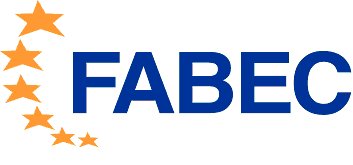New Dutch-German airspace structure

Since 11 March 2010, a new airspace structure has been implemented in the Dutch-German border area. The project, called AMRUFRA (Amsterdam-Ruhr-Frankfurt), will improve the main traffic flows in the airspace between Frankfurt and Amsterdam. It includes the Amsterdam East sector, the EUROCONTROL Ruhr sector, controlled by the four-State Upper Area Control Centre (UAC) in Maastricht, and several sectors of the Langen Control Centre located near Frankfurt.
The airspace in the Dutch-German border area has always been regarded as one of the most complex airspaces worldwide. It accommodates flights from the southeast inbound to Amsterdam and in the opposite direction outbound from Amsterdam. Besides these flights, Frankfurt arrivals and departures from/to the northwest, such as transatlantic flights, also cross this area. In addition, there is military air traffic, arrivals and departures to and from Brussels as well as transit flights to and from other major European cities. The continuous traffic growth in recent decades, with an increasing amount of flights taking off and landing at the large airports of Düsseldorf and Cologne, has significantly added to the complexity of this airspace. Airlines often experienced delays and re-routings as a result of the congestion, which costs time and money.
In 2006, experts from the Netherlands air navigation service provider LVNL (Luchtverkeersleiding Nederland), DFS Deutsche Flugsicherung GmbH, the UAC Maastricht, the Royal Netherlands Air Force (RNLAF) and the German Airforce (GAF) joined to find a solution to the problem. The objective was to enhance capacity in this busy and complex airspace by separating the individual traffic flows. This required the cooperation and mutual consent of all the civil and military parties concerned. Different scenarios were tested in simulations, several air traffic control sectors had to be restructured, air traffic controllers were trained for the new structure and had to acquire new sector licences.
AMRUFRA is expected to create an increase of capacity of 15 percent, sufficient up to at least 2015. Airlines will benefit financially from the airspace restructuring owing to shorter routes and improved punctuality. Lower fuel consumption will also lead to a reduction in aircraft emissions.
AMRUFRA is the first cross-border project fully implemented under the umbrella of FABEC, the Functional Airspace Block Europe Central. FABEC brings together the six States of Belgium, France, Germany, Luxembourg, the Netherlands and Switzerland, their civil and military air navigation service providers as well as EUROCONTROL's four-State air traffic control centre in Maastricht. 55 % of all European traffic takes place in the FABEC area.


.png)





.jpg)
Comments
There are no comments yet for this item
Join the discussion